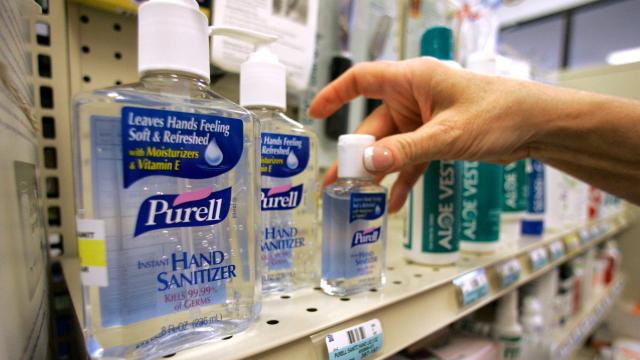Bacteria are steadily winning the war against even our strongest antibiotics, stoking fears of a future that resembles Victorian-era England in all the worst ways. A new study published Wednesday in Science Translational Medicine is sure to add to this existential terror: It suggests that at least some hospital-spread bugs are also starting to fend off alcohol-based disinfectants.
The Australia-based researchers behind the study were trying to make sense of a worrying paradox. Starting in 2002, Australia’s hospitals introduced and promoted the widespread use of alcohol-based hand sanitisers for its doctors — a trend that’s now standard throughout the country and elsewhere, including in the United States.
Three years later, the researchers found that these programs slowed down the rate of certain antibiotic-resistant infections, such as methicillin-resistant Staphylococcus aureus (MRSA), within hospitals. But in more recent years, doctors have noticed that the rate of other drug-resistant infections in hospitals, particularly those caused by Enterococcus faecium, had only increased since their introduction.
Hoping to find out why, they compared samples of E. faecium collected in two major Australian hospitals before and after the phasing in of these disinfectants, from 1997 to 2015. They exposed the different germ batches to a disinfecting solution made out of 23 per cent isopropyl alcohol.
After 2010, they found, the bacteria became noticeably more likely to survive their alcohol bath, having an average tolerance tenfold-higher than older bacteria.
Because disinfectants are usually made with 70 per cent alcohol, the researchers next crafted a more real-world experiment. They exposed different strains of E. faecium to mice that lived in a cage disinfected with a typical alcohol antiseptic, then they measured (via poop pellets) how easily the bacteria colonised the mice’s guts.
Once again, they found that the alcohol-tolerant strains thrived more under these conditions.
These strains, the authors wrote, might be undermining “the effectiveness of alcohol-based disinfectant standard precautions”.
In the simplest of terms, alcohol kills off bacteria by messing with their cell membrane in a lot of different ways at once, causing them to literally burst. This mechanism of death is much quicker and distinctly different from how antibiotics typically kill bacteria. So it’s been thought that bacteria (and some viruses) cannot easily adapt to alcohol.
But unfortunately, this new study isn’t the first to show that bacteria, including species that can cause disease, can sometimes defeat our alcohol-based weapons.
In the current study, the rate of alcohol tolerance was roughly the same in both antibiotic-resistant and “normal” strains of E. faecium, suggesting that different genetic mutations, separate from those responsible for antibiotic resistance, account for their hardiness against alcohol.
Because of how little attention had been paid to alcohol tolerance among bacteria, though, there isn’t any clear sense of how large of a problem it really could be, or how many other species could be developing their own tolerance.
Globally, according to the researchers, Enterococcus infections are responsible for 10 per cent of cases of hospital-acquired bacteremia, a blood infection that can lead to the often-fatal condition sepsis; in Australia, about a third of these infections are caused by drug-resistant E. faecium.
The researchers are careful to point out that these findings aren’t definitive. There must be more studies of other hospitals across the world before we can be sure of anything. And even if some bacteria are adapting to resist alcohol, that doesn’t negate the value of these disinfectants.
“Alcohol-based disinfectants remain an important general primary defence against cross-transmission of most microbial and some viral pathogens in health care settings,” the authors said.
What is needed, they added, are efforts to ensure that medical professionals are using these disinfectants properly. Much like with antibiotics, bacteria might be surviving and becoming more tolerant if they’re being exposed to diluted levels of disinfectants, either because doctors aren’t rubbing their hands long enough or because of the type of solution itself — foam or gel-based rubs, the authors noted, might be less effective than typical liquid ones.
So the next time you find yourself in a hospital, be sure to use a generous amount of alcohol-based hand sanitiser, and rub it in thoroughly until your hands are fully dry.
